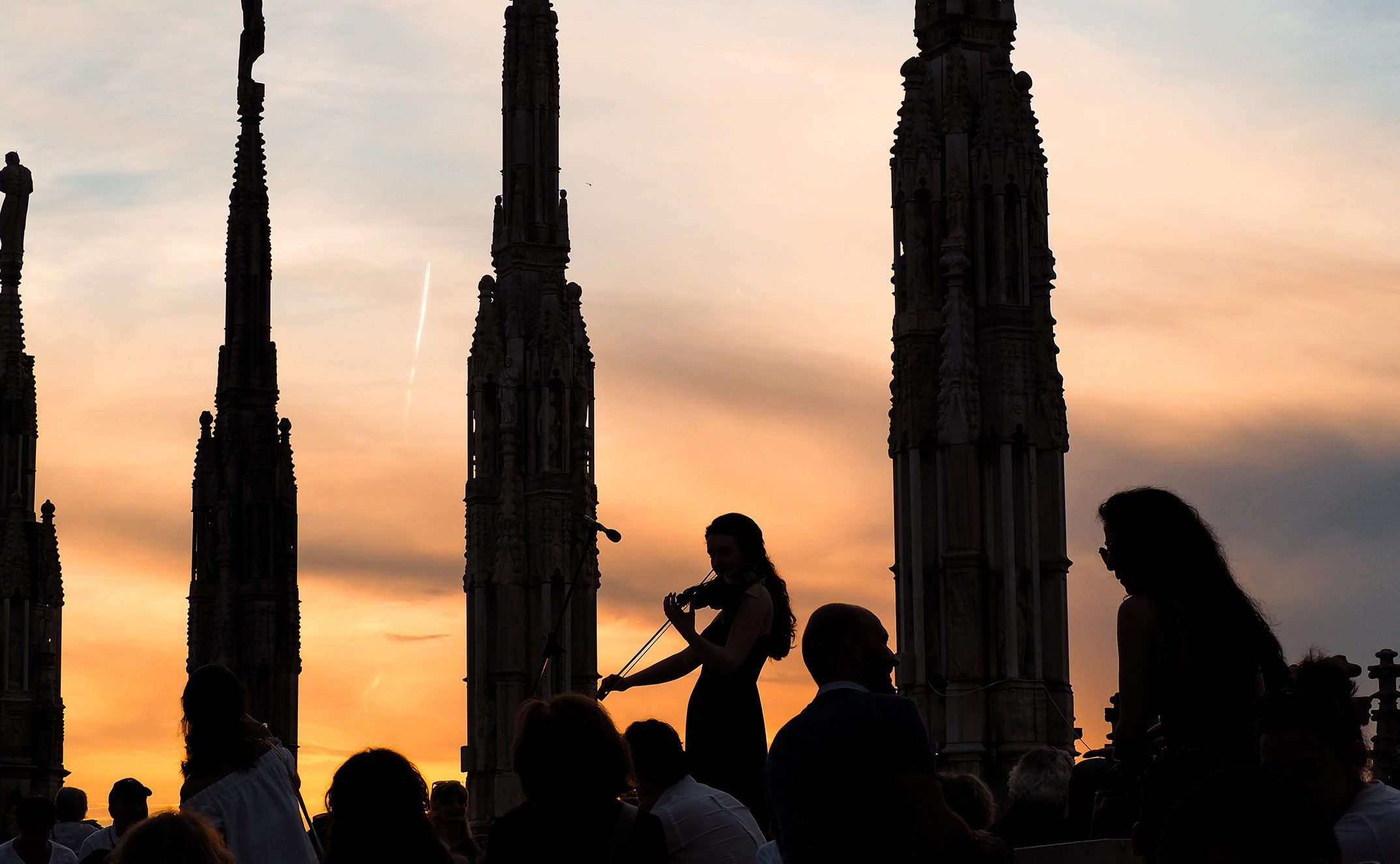The Terraces
The Duomo Terraces were conceived by architects from the very beginning of construction, a choice that testifies to how much they had assimilated the structural schemes of the International Gothic in accordance with their own perception, borrowed from the tradition of Lombard construction. The viability of the Terraces has allowed over the centuries to stabilise a new relationship between the Monument and the surrounding area.
The walkways are easily reached on foot or by lift: on the first level (around 31m above ground) they run along the entire perimeter of the Monument, reaching up to the counter-façade. From here, two steep stairways lead visitors to the second level (45m above ground), where there is the Central Terrace, the highest point reachable by visitors today. This occupies around 1,530m², which corresponds to the internal surface of the main nave. The high terraces represent one of the most evocative places in the city, from where a splendid panorama of Milan can be enjoyed and, on clear days, the mountains that surround the Po Valley can be admired.
On the Terraces, 135 richly ornate spires stand out, the majority measuring approximately 17 metres; the largest, the Main Spire, was built between 1765 and 1770 under the supervision of the architect Francesco Croce. At its top shines the statue depicting the Assumption of the Virgin in Heaven, the Madonnina, made of gold-embossed copper sheets. The work was placed to crown the Great Spire at the end of 1774 and since then has protected the city and our Cathedral.
The Terraces offer a privileged view over Milan and allow you to take a suggestive walk through an impressive stone forest, full of wonderful decorations carved in Candoglia marble. There are over 3,400 statues, 150 gargoyles, 96 giants, 410 corbels for statues, along with flying buttresses, falconature, and obviously a silent population of saints and martyrs who watch over the Monument. Above all our Madonnina.


